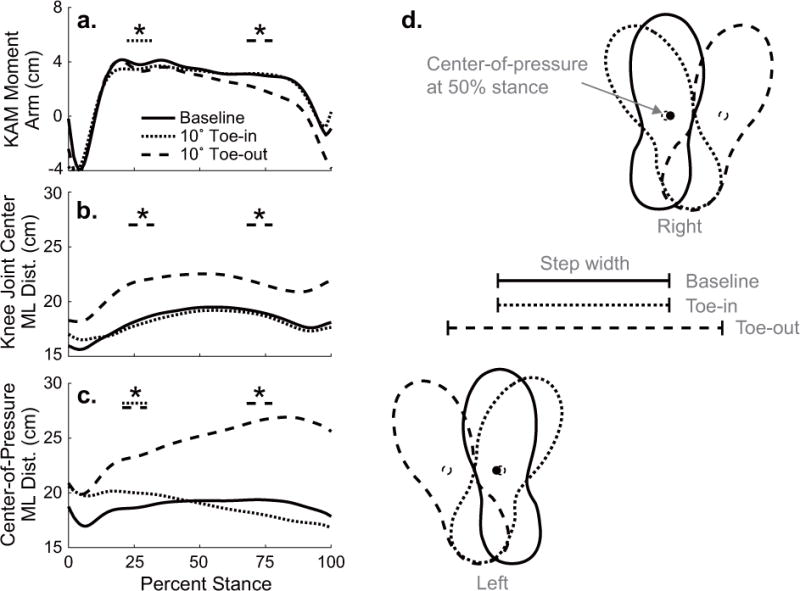Fig. 4.

(a) The knee adduction moment (KAM) moment arm, (b) mediolateral (ML) distance between knee joint centers, and (c) mediolateral distance between centers-of-pressure during the baseline (solid), 10° toe-in (dotted), and 10° toe-out (dashed) trials. Toe-in and toe-out gaits are compared to baseline (* p < .05) at the time of the first and second KAM peaks. (d) A schematic of foot placement for consecutive left and right steps illustrates the average center-of-pressure trajectories from c. At the time of the first KAM peak, the KAM moment arm was smaller when subjects toed-in (p < .001) and trended towards being smaller when subjects toed-out (p = .071). For both FPAs, subjects lateralized their heels during early stance. When toeing-in, this lateralization was achieved by internally rotating the foot about the midfoot. When toeing-out, however, subjects lateralized their heels by increasing their step width (Table 2).
